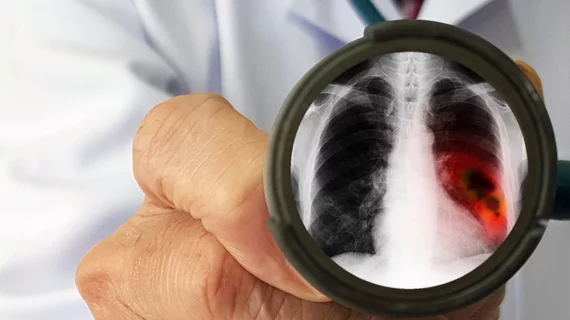Artificial intelligence-radiologist combo reduces missed lung cancer diagnoses by 60%
Combining artificial intelligence with expert radiologists dropped the rate of missed lung cancers on chest X-rays by 60%, U.K. experts reported in a new study.
Despite efforts to increase CT screening, many patients may still rely on radiographs for early diagnosis of the disease. Interpreting these images can prove to be a “complex and subjective task,” with about 90% of lung cancer misdiagnoses occurring on chest X-rays, researchers wrote May 11 in Clinical Radiology.
Wanting to address this issue, experts deployed a commercially available algorithm as a first reader of CXRs. When used on its own, AI performed similarly to physicians. However, combining the two dramatically dropped misses while standardizing the performance of all rads.
“The proposed AI implementation pathway stands to reduce radiologist errors and improve clinician reporting performance,” Matthew Tam, with the Department of Radiology at Southend University Hospital in Essex, and co-authors concluded. “Furthermore, taking a radiologist-centric approach in the development of clinical AI holds promise for catching systematically missed lung cancers. This represents a tremendous opportunity to improve patient outcomes for lung cancer diagnosis.”
For the study, researchers curated a dataset of 400 CXRs, including 200 difficult-to-diagnose lung cancer cases. Three expert radiologists reviewed the images as did an AI algorithm from London-based Behold.ai. And AI and radiologist labels were combined to simulate the triage workflow, Tam et al. noted.
As a standalone, AI was equivalent to the average radiologist, identifying tumors at an overall accuracy rate of 87%. Combining rads and AI proved most fruitful, with all three radiologists’ performance improving, hitting an average of 90.67%, with sensitivity of 91.33% and 90% specificity.
“In the present study, implementation of AI-based triage caused a significant reduction in the number of tumors missed by radiologists,” the authors noted. “The overall reduction in missed cancers of 60% has great promise in improving patient survival rates through the early identification of lung cancers,” they added.
You can read more about their results in Clinical Radiology here.

